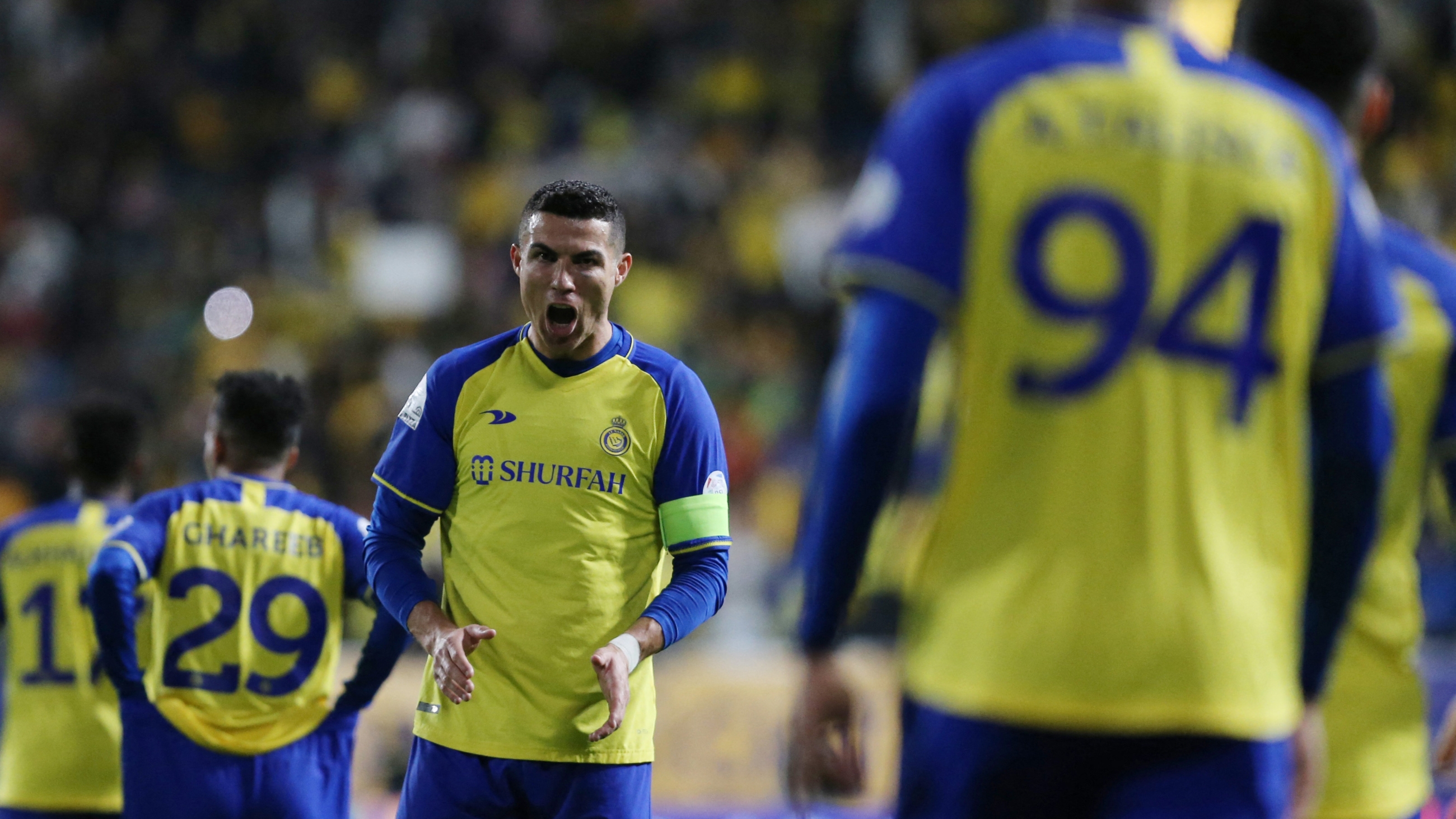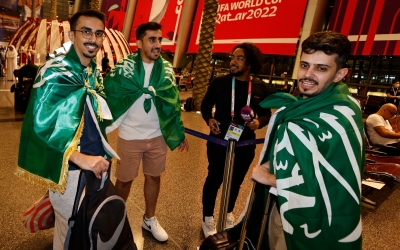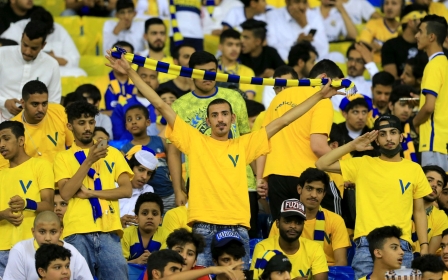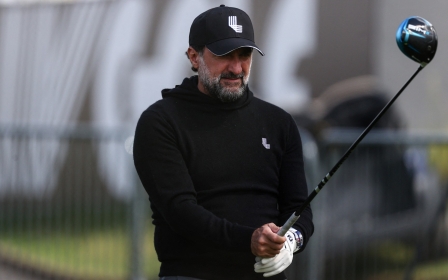Saudi Arabia's pursuit of football stars risks sidelining local talent

From the historic World Cup win over Argentina to Al-Nassr FC landing Cristiano Ronaldo and rival Al-Hilal FC making the Club World Cup final, Saudi Arabian football is going through one of its most successful periods.
Away from the global spotlight, there have been further triumphs at the youth level, with the Green Falcons winning last year's Asian Football Confederation U-23 Asian Cup, pointing to a positive future for the national team.
With officials promising that more big names will follow Ronaldo to the domestic league, it's hard not to get caught up in the excitement and euphoria surrounding Saudi football at the moment.
But there is a fine balancing act officials in the kingdom will have to strike to ensure that the development of local talent, and ultimately the national team, is not hindered by the flow of foreign players coming into the Saudi Pro League (SPL).
'There's no doubt we would love to see Saudi players playing on the biggest European stages'
- Ibrahim Alkassim, SAFF general secretary
In recent years, the SPL has relaxed the rules on the number of foreign players allowed, designed to increase the professionalism and standard of the domestic game.
New MEE newsletter: Jerusalem Dispatch
Sign up to get the latest insights and analysis on Israel-Palestine, alongside Turkey Unpacked and other MEE newsletters
As recently as the 2016-17 season, only four were allowed for each team, while there was a ban on signing foreign goalkeepers. Over the following years that quota has gradually increased, with eight foreign players now allowed per team, including goalkeepers.
In a league full of foreign coaches seeking instant success, the development of local talent takes a back seat to the immediate requirement of winning games, which means almost all clubs make full use of the allowed quota.
But there are genuine questions to be asked as to whether this push, which undoubtedly improves the standard of domestic competition, is counterproductive to the aim of developing local Saudi talent.
Few chances for young players
For John Duerden, a senior writer on Asian football and a keen observer of the SPL, there was a concerning development at Al-Nassr recently that highlights the challenge many local players face.
"Most clubs have foreign keepers," he said, "and it was striking that the injury to Al-Nassr [Colombian] goalkeeper [David] Ospina did not mean that [Nawaf] al-Aqidi, who had done well for the [Saudi] national team at the Gulf Cup, was given a chance. Instead, an on-loan Argentine was quickly drafted in," he told Middle East Eye.
An MEE analysis of the data from Saudi Arabia's 2022 U-23 Asian Cup winning squad points to another concerning picture for that generation of Saudi players. About half have played fewer than 10 games in the league so far this season.
Further, a recent report from the Switzerland-based CIES Football Observatory analysed data from 60 leagues across the world assessing the percentage of available match minutes played by players under 21 years of age from January 2021 to March 2022.
Australia's A-League were the leaders in Asia with 11.1 percent, followed by the United Arab Emirates Pro League (9.3 percent) and the second-division Japanese League at 5.6 percent.
Saudi Arabia ranked last of all 60 nations, with just 1.6 percent.
"The best solution, in general, is to really invest in youth development and strengthen the grassroots," Duerden said.
"There's no shortcut to that. It takes time and patience. Saudi Arabia does produce good young players as we have seen at various Asian youth levels, and this needs to be built upon."
Pros and cons
Wael Jabir, a Middle East football expert, believes that, while allowing eight foreign players per team undoubtedly comes at the expense of local talent, it nonetheless drives competition within each squad.
"The few players who push their way to be starters, especially at top clubs, will be more competitive against international talent, which should serve the national team well," he told MEE.
"Additionally, we will see Saudi internationals and those on the fringes of the national team move to smaller SPL clubs or even first division clubs in pursuit of regular football, which should raise the level of those clubs."
''The question is finding a balance which ensures that foreign players brought in are better than locals as much as possible'
- John Duerden, Asian football writer
There is merit in Jabir's argument as illustrated in recent years through the career of national team striker Firas al-Buraikan.
Up until the 2021-22 season he was on the books of Al-Nassr, a promising young talent struggling for game time and competing against international stars like Morocco's Abderrazak Hamdallah, scoring just four goals in 28 games across four seasons.
In search of more regular game time, he opted to leave the Riyadh giants for the humbler surrounds of Al-Fateh FC. It is a move that has paid dividends.
In the 18 months since, he has played 43 games and scored 19 goals, establishing himself as the leading Saudi scorer in the league over that period.
"Plenty of leagues thrive with no limits on foreign players," Duerden said.
"The question is finding a balance which ensures that foreign players brought in are better than locals as much as possible, that there is a proper development system in place, young locals are still given a chance to play and that there are opportunities to play overseas or further down the leagues."
Exporting vs importing talent
The question of Saudi talent playing overseas remains the elephant in the room given the dearth of Saudi players looking to take their talents to Europe, or anywhere else in the world for that matter.
As Saudi Arabia looks to build on recent successes, the question is whether it needs to export players, particularly to Europe, for them to develop further.
"I think the recent World Cup proved that our players have what it takes to compete on the biggest global stages and against world-class players," Ibrahim Alkassim, general secretary of the Saudi Arabia Football Federation (SAFF), told MEE.
"Our league now includes stars from all corners of the globe, so our players are mixing with former Champions League, La Liga, Premier League and Serie A winners, which is developing them in new and unforeseen ways," he said.
It's a viewpoint shared by Jabir, who believes Saudi players don't necessarily need to play in Europe to improve.
"If the vision is to make SPL one of the best leagues in the world, as previously stated on numerous occasions by Saudi officials, then improvements across the ecosystem, from coaching to infrastructure to players' lifestyle and professionalism, need to be built within the country," Jabir said.
"Should that happen, there would be no real need for players to go to Europe unless it's a top European league."
While Alkassim is right to be proud of retaining their best players within the domestic competition, reading between the lines of his comments he is also fully aware of the benefits of sending players abroad.
The success of players like Egypt's Mohamed Salah and Algeria's Riyad Mahrez on Europe's biggest stages, and the subsequent positive impact that has had on their national teams and Arabs fans, is not lost on him.
SAFF plans to grow the talent pool of Saudi players through regional training and grassroots investment, he said, so that in the future there is an equal amount of talent playing abroad and locally.
"There's no doubt we would love to see Saudi players playing on the biggest European stages in front of millions of fans," he said.
"I am sure the time will come very soon as we continue our investment in grassroots and across all areas of the game."
Middle East Eye delivers independent and unrivalled coverage and analysis of the Middle East, North Africa and beyond. To learn more about republishing this content and the associated fees, please fill out this form. More about MEE can be found here.






